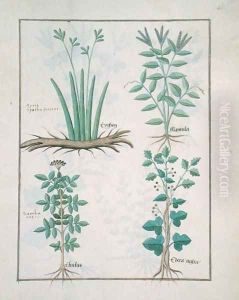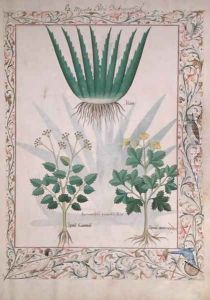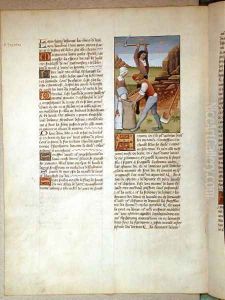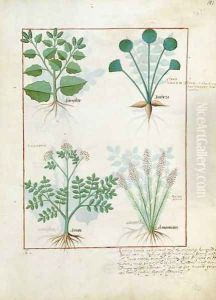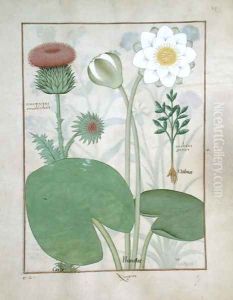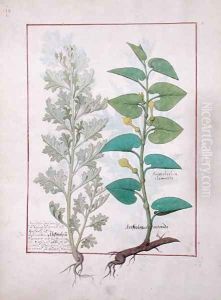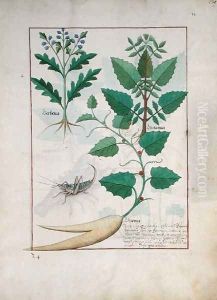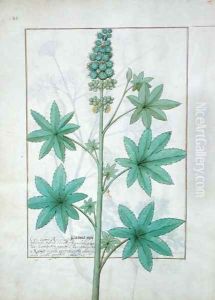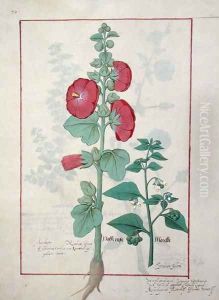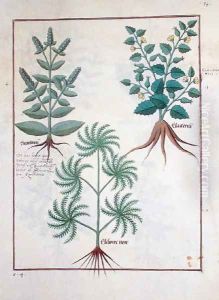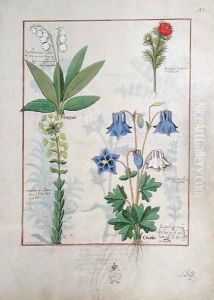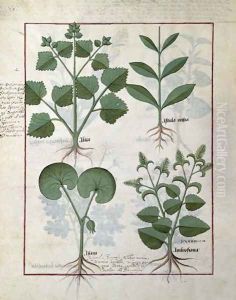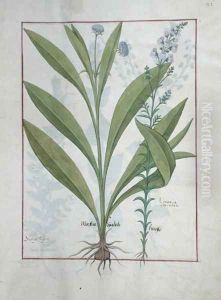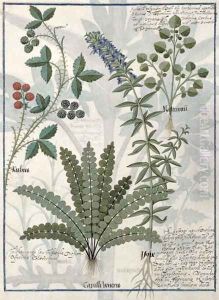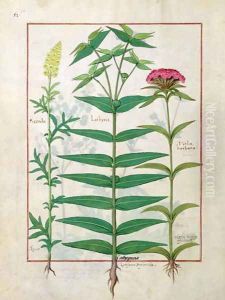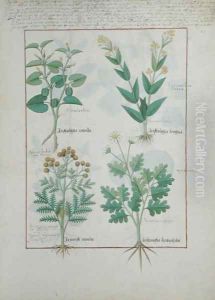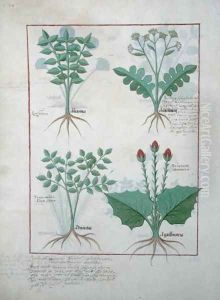





Top row- Ligustrum and Acanthus. Bottom row- Grass plant and Apollinaris, illustration from The Book of Simple Medicines, by Matthaeus Platearius d.c.1161 c.1470
-
About Reproduction
Discover the allure of art with our faithful reproduction of "Top row- Ligustrum and Acanthus. Bottom row- Grass plant and Apollinaris, illustration from The Book of Simple Medicines, by Matthaeus Platearius d.c.1161 c.1470", originally brought to life by the talented Robinet Testard. Unlike posters or prints, our hand-painted oil painting breathes an unique sense of depth and texture into your space. Every detail, every stroke, and every texture is meticulously recreated, paying the perfect homage to Robinet Testard and his artistic vision.
Owning this piece is more than just decoration - it's a statement of your refined taste in art. Let the vibrant colors and intricate details of this replica serve as a daily reminder of the beauty in our world. Elevate your decor and appreciate the richness of art with our replica of this masterpiece.
-
Painting Description
The illustration titled "Top row- Ligustrum and Acanthus. Bottom row- Grass plant and Apollinaris" is a notable work from "The Book of Simple Medicines" by Matthaeus Platearius, dating back to circa 1470. This particular illustration was created by Robinet Testard, a renowned French illuminator and miniaturist active during the late 15th century. Testard is celebrated for his detailed and vibrant manuscript illuminations, which often depicted botanical subjects with remarkable accuracy and artistic flair.
"The Book of Simple Medicines" (originally "Liber de Simplici Medicina") is a medieval medical text that compiles knowledge about medicinal plants and their uses. Matthaeus Platearius, a physician from the medical school of Salerno, authored this comprehensive guide, which became a crucial reference for herbal medicine during the Middle Ages. The text is known for its systematic approach to cataloging plants and their therapeutic properties, making it an invaluable resource for both contemporary and future generations of medical practitioners.
In this specific illustration, the top row features Ligustrum and Acanthus, while the bottom row showcases a Grass plant and Apollinaris. Ligustrum, commonly known as privet, is a genus of flowering plants in the olive family, Oleaceae. It has historically been used for its medicinal properties, including treatments for various ailments. Acanthus, another plant depicted in the top row, is known for its distinctive leaves and has been used in traditional medicine as well as in classical architectural design, particularly in Corinthian column capitals.
The bottom row includes a Grass plant, which represents the vast and diverse family of Poaceae. Grasses have been fundamental to human civilization, providing food, fodder, and various other uses. Apollinaris, also depicted in the bottom row, is less commonly known but holds significance in historical botanical studies.
Robinet Testard's illustration not only serves as a visual aid for the medicinal text but also stands as a testament to the intricate artistry and scientific curiosity of the period. The detailed representation of each plant highlights the importance of botanical knowledge in medieval medicine and the enduring legacy of works like "The Book of Simple Medicines."
-
Lead Time & Shipping
When you order this oil painting replica, it typically takes 2-3 weeks to paint. If the artwork is more complex, it might need a little more time to ensure the best quality. Once it's ready, we'll send you a photo for your approval. After you give the green light, we'll ship it to you for free.
-
Return & Refund
We believe in the quality of our hand-painted oil painting reproductions, and your satisfaction is our priority. If for any reason, you are not completely satisfied with your purchase, we offer a 45-day return policy. You can return your artwork within 45 days of receipt and receive a full refund. Please note that the artwork must be returned in the original packaging and in the same condition as it was received.





